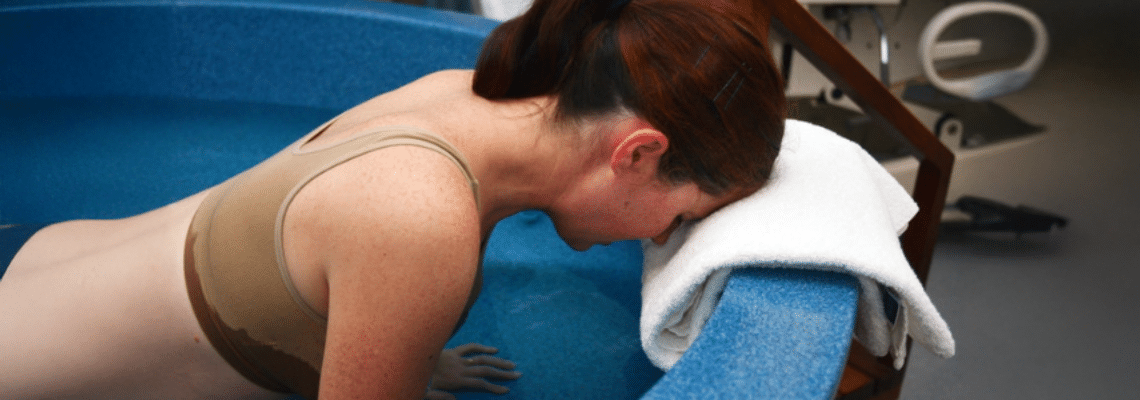
Whether lying on their back, on all fours, sitting upright or squatting – women adopt different birthing positions during labor. It is still unknown how the respective final birth position affects the satisfaction of the woman giving birth. This is precisely what researchers from the University Hospital Bonn (UKB), the University of Bonn and the University of Cologne have now investigated. In doing so, they also took particular account of whether the choice of birth position was voluntary. The results showed that women were more satisfied when the choice of birth position was voluntary. Around three quarters of the respondents lay during the birth and were particularly dissatisfied if they felt that they had not made this choice themselves. However, if the mothers-to-be had chosen the supine or lateral position themselves, the position tended to make them even more satisfied. The study has now been published in the journal Archives of Gynecology.
Women Are More Satisfied When They Can Choose their Birthing Position
For a long time, the supine position was the most common birthing position in Western countries – this allowed obstetricians unhindered access to the mother and child. However, upright birthing positions such as sitting or squatting are also common in various cultures. The question of which position is best for expectant mothers and the unborn child is controversial in the literature. “To date, international guidelines mostly only recommend that women adopt the birthing position they prefer,” explains Prof. Dr. Nadine Scholten, who recently became head of the Research Department for Health Communication and Health Services Research at the UKB and holds a professorship in psychosomatic and psycho-oncological health services research at the University of Bonn. The German guideline also states that women should adopt the position that seems most comfortable to them. However, they should also be encouraged to take an upright position during the last phase of labor. “Whether they ultimately lie, sit or squat depends in reality on the wishes of the expectant mothers themselves, but also on the suggestions of the midwives, obstetricians and sometimes necessary medical measures,” explains Prof. Dr. Brigitte Strizek, Director of the Clinic for Obstetrics and Prenatal Medicine at UKB.

A team led by first and corresponding author Prof. Scholten, who conducted the study at the Institute for Medical Sociology, Health Services Research and Rehabilitation Research (IMVR) at the University of Cologne and at the UKB, wanted to find out which birth situation women were most satisfied with in retrospect. Almost 800 mothers were asked about their final birth situation and their overall satisfaction with the birth using an anonymous questionnaire. All the data analyzed here comes from women who had vaginal births in a hospital without the use of forceps or vacuum extractors and who had given birth eight to twelve months before the survey. In their study, the researchers also asked about the mothers’ satisfaction, depending on whether or not the birth position was freely chosen. They also asked about the reasons why they did not choose the position freely.
It was found that more than three quarters of the mothers gave birth with their child in the lateral or supine position. Of these women, up to 40 percent stated that they had not voluntarily chosen their birthing position. “The most common reason given by the respondents was instructions from medical staff,” explains Prof. Scholten. The most common position assigned by obstetricians was the supine position. It was striking that women were more satisfied with their birth if they were allowed to choose the position voluntarily – especially if they chose the supine position themselves. Women who were not allowed to choose their birthing position were particularly dissatisfied when the medical staff dictated the position and not the CTG to record the heart rate of the unborn child and the contractions or the epidural anesthesia, the anesthetic for pain relief, prevented the desired position.
Raising Awareness Among Medical Staff
“What is particularly striking is the number of women who did not choose the birth position themselves, as well as the associated lower level of satisfaction with the birth,” summarizes co-author Prof. Strizek. However, the team cannot confirm whether greater voluntary choice of birthing position in the future would lead to fewer women giving birth in the supine position. In order to increase women’s subjective satisfaction with their birthing experience, they should be given the opportunity to adopt their preferred position. According to the researchers, the first step is to raise awareness among medical staff and to empower women to understand and better communicate their preferences. If a particular position would be medically beneficial for the woman giving birth, obstetrician teams need to do a better job of explaining this to women so that they rarely feel that they have not chosen their birthing position themselves.


